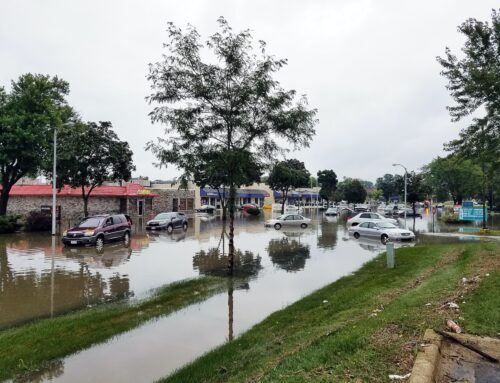Weekly Wastebasket
Paying the Price: Climate Change Costs Hit Close to Home
One of the goals of our report, “Paying the Price,” is to introduce people to the many ways that federal spending touches our lives and how an external shock like climate change can have ripple effects that ultimately create problems (read: costs) down the road. This week, we look at the housing market.
The federal government plays a significant role in the housing market, offering support through various programs and policies such as mortgage guarantees, insurance, and subsidies. The federal government’s involvement in the housing market can be traced back to the early 20th century, with the establishment of institutions like the Federal Housing Administration (FHA) and the then-Veterans Administration (now Department of Veterans Affairs) to facilitate mortgage lending and expand homeownership. Mortgage-backed securities and Government-Sponsored Enterprises (GSEs) such as Fannie Mae and Freddie Mac, which purchase mortgages from lenders to provide liquidity to the market and enable lenders to issue more loans, further deepened the government’s presence in the housing sector. The 2008 financial crisis demonstrated how involved the federal government is in housing.
Climate change-related risks, such as sea-level rise, coastal erosion, and extreme weather events, directly impact the housing market. Shockingly, 35 million homes in the United States, roughly a third of the nation’s housing stock, are at high risk of being affected by natural disasters. This issue has broader implications for the federal government, which guarantees mortgages and mortgage-backed securities, as extreme weather events lead to the physical destruction of properties and higher default rates on mortgages. When borrowers in disaster-affected areas default, the GSEs are required to purchase these defaulted mortgages at face value. The collateral’s recoveries may also be lower due to property damage.
In addition to mortgage support, the federal government offers insurance through the National Flood Insurance Program (NFIP), which has 5 million policyholders nationwide, accounting for more than $1 trillion in coverage. By subsidizing flood insurance rates, the program has enabled many individuals to live in areas prone to flooding. As a result, the NFIP has faced numerous financial challenges due to its reliance on taxpayer subsidies and inaccurate flood risk assessments. As risks intensify, federal insurance programs like the NFIP face growing challenges in maintaining financial stability while providing affordable coverage.
A study conducted earlier this year by researchers from the Environmental Defense Fund, Resources for the Future, and the Federal Reserve says the U.S. real estate market has not fully considered the growing threats posed by rising sea levels, more powerful storms, and heavy downpours. These findings confirm previous evidence and reporting by TCS that points to several contributing factors, including inaccurate federal flood maps, government insurance policies that encourage development in flood-prone areas, and buyers who underestimate the risks associated with climate change. The researchers estimate that properties in vulnerable areas across the country are overvalued by $121 billion to $237 billion, potentially leading to a real estate bubble in the future.
While coastal communities along the Atlantic and Gulf coasts, including Florida, face the most overvaluation due to their exposure to hurricanes and rising seas, other regions, such as New England and Appalachia, also face significant devaluation due to increasing flooding caused by extreme precipitation. Low-income homeowners are particularly at risk of losing substantial equity if these unrecognized risks materialize. Insurers and lenders may face their own financial reckoning. At the end of the day, it’s taxpayers who bail everyone out.
Meanwhile, Allstate and State Farm’s recent decision to halt the sale of new home insurance policies in California is merely the latest development in a series of insurers retracting coverage in a fire and flood-ravaged state. Following the devastating fires in 2017 and 2018, thousands of Californians experienced non-renewal of their policies. And while the state government will surely step in to help retain insurers and protect homeowners, this problem will not stay contained to just California. There will be pressure to bring the federal government will be brought in, like with floods, to backstop the insurance market. The problem is that with all the political tensions, the federal government is not very good at pricing risk. In reality, the complexity of any response to prevent a market collapse could have substantial potential fallout for California’s real estate industry and taxpayers.
No matter where you live, climate change is hitting close to home, and we’re all paying the price. But the good news is that real solutions and smart spending can keep our families and property out of harm’s way. It’s time for some common sense on climate.


















Get Social